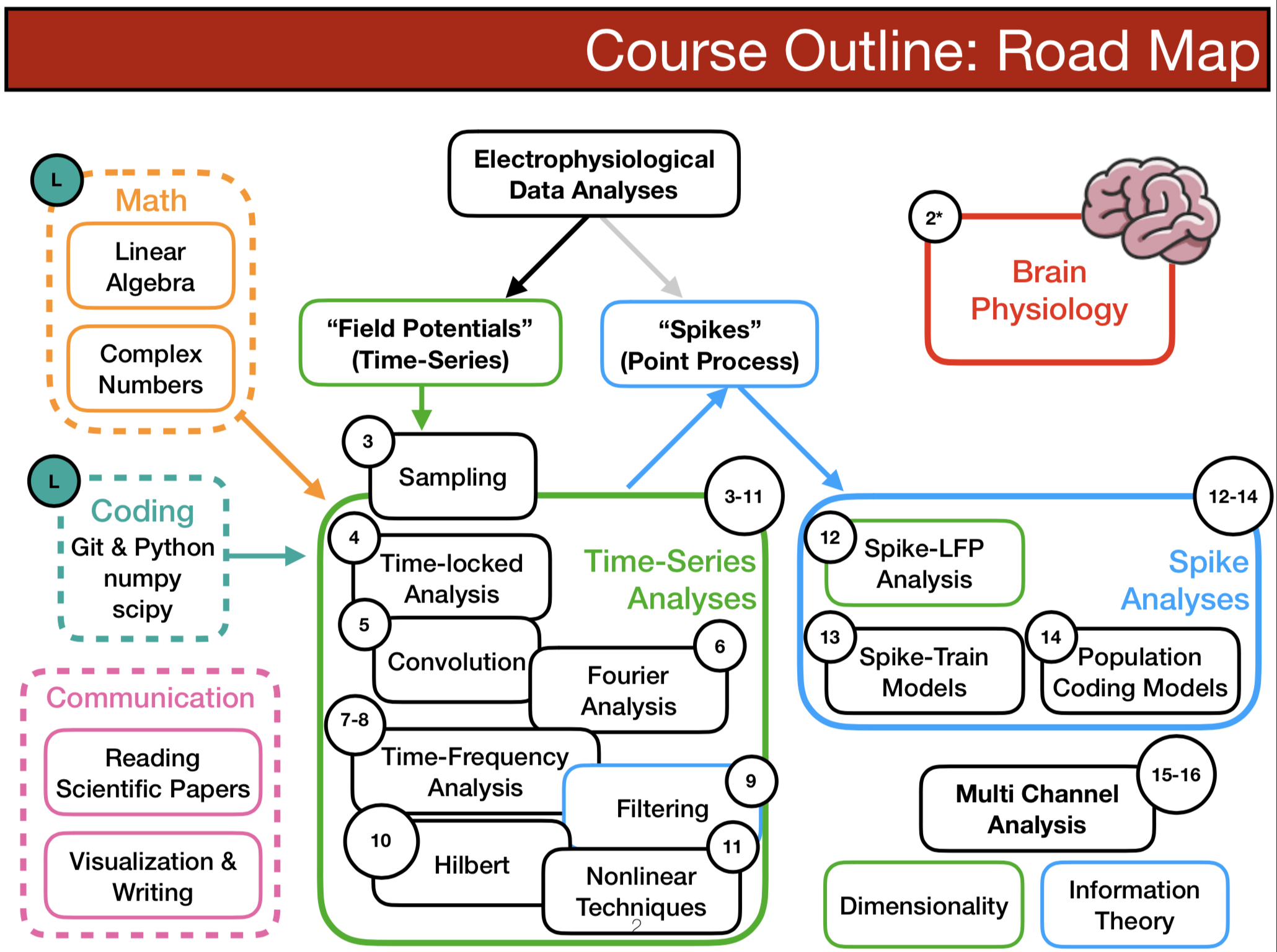Welcome to Neural Signal Processing. This repo contains all the course material, including course documents, finished slides in .pdf, and assignments.
- Are you excited by the notion of controlling an exoskeleton with your brain signals?
- Are you curious about the scientific pursuit of dissecting the neural basis of our minds?
- Are you driven by creating consumer neurofeedback technologies that can improve our lives?
- Or are you simply fascinated with decoding the brain as an extremely complex electrochemical system?
Learning how to analyze brain signals, as well as understanding their biological origins, are the first steps to accomplishing all of the above. Welcome to Neural Signal Processing (in Python).
See syllabus for details.
If you're not taking this class at UCSD, the most useful part for you is probably the assignments. These are self-contained Jupyter Notebooks, and they walk through a progression of concepts that take you from the foundations of digital signal processing to more neuro-specific (and more advanced) techniques. They start with a lot of scaffolding, and slowly require you to be more independent. Refer to the lecture slides (or Google) for additional clarifications, but I don't recommend reading the slides first for learning because they are not very verbose.
- A0: Light review on Python, numpy, dot product, and complex numbers
- A1: Sampling + digitization of signals, and time-locked analysis (ERP)
- A2: Code your own Discrete Fourier Transform from scratch (just dot product and complex numbers - easy!)
- A3: Time-frequency analysis via short-time Fourier transforms + introduction to filter design
- A4: Analytic signal (Hilbert Tranform), cross-frequency coupling, and spike-LFP analysis
Student projects from Summer Session 1, 2019 (with their permission to share). These are done using publicly available datasets (see here, with minor curation from me, as well as data they found/recorded on their own.
Anesthesia-Induced Transition in Monkey ECoG
Group 1 | Group 2 | Group 3 | Group 4 | Group 5 | Group 6
Decoding Finger Movement from Human ECoG
Fear & Expectation ERP with MUSE EEG
Improving SSVEP Decoding via Baselining

